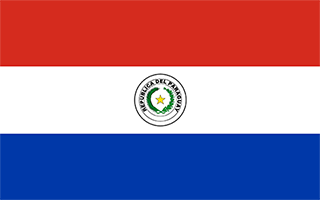Facts and Data
Webpages:
Official Unesco Page
Ruinas Jesuíticas del Paraguay, (Unitour) (spanish only)
Basis Data:
Unesco World heritage since: 1993
Size of heritage: 28 ha
- Buffer zone: 37 ha
Coordinates:
Longitude: -54,300°
Latitude: -26,867°
Summary
In addition to their artistic interest, these missions are a reminder of the Jesuits' Christianization of the Río de la Plata basin in the 17th and 18th centuries, with the accompanying social and economic initiatives.
Location on Map
Show bigger map on Openstreetmap
Jesuit Missions of La Santísima Trinidad de Paraná and Jesús de Tavarangue
The Jesuit Missions of La Santísima Trinidad de Paraná and Jesús de Tavarangue, located in Paraguay, are two remarkable UNESCO World Heritage sites that bear witness to the rich history and cultural heritage of the Jesuit missions in South America. These missions, established in the 17th and 18th centuries, played a significant role in the evangelization and education of indigenous communities.
History
The Jesuit missions in Paraguay were established by the Society of Jesus, a Catholic religious order, with the aim of converting and educating the indigenous Guarani people. The missions were founded in remote areas, away from the influence of European colonizers, to create self-sustaining communities where the Guarani could preserve their culture and way of life.
La Santísima Trinidad de Paraná, founded in 1706, was one of the most prosperous and influential missions. It served as the political and economic center of the Jesuit missions in Paraguay. The mission was known for its impressive architecture, including a grand church, residential buildings, workshops, and agricultural fields.
Jesús de Tavarangue, founded in 1685, was another significant mission. It was renowned for its beautiful church, which was considered one of the finest examples of Jesuit Baroque architecture in South America. The mission also had a school, workshops, and agricultural areas.
However, the Jesuit missions faced numerous challenges throughout their existence. In the late 18th century, political conflicts and the expulsion of the Jesuits from the Spanish Empire led to the decline and abandonment of the missions. The buildings fell into disrepair, and the indigenous communities dispersed.
Current State
Today, the Jesuit Missions of La Santísima Trinidad de Paraná and Jesús de Tavarangue are protected UNESCO World Heritage sites, and efforts have been made to preserve and restore these historical treasures.
La Santísima Trinidad de Paraná has undergone extensive restoration work, and visitors can now explore the well-preserved ruins of the church, residential buildings, and workshops. The site provides a glimpse into the daily life of the Guarani people and the architectural brilliance of the Jesuits.
Jesús de Tavarangue, although more heavily damaged, still showcases the grandeur of its church. The remaining walls and intricate details give visitors a sense of the mission's former glory. Ongoing restoration projects aim to stabilize and conserve the site, ensuring its long-term preservation.
Both sites offer guided tours, providing visitors with a deeper understanding of the history, culture, and significance of the Jesuit missions. The missions also serve as a reminder of the complex and often controversial history of European colonization in South America.
The Jesuit Missions of La Santísima Trinidad de Paraná and Jesús de Tavarangue stand as testament to the Jesuits' efforts to create self-sustaining communities and preserve indigenous cultures. These UNESCO World Heritage sites not only showcase architectural brilliance but also serve as a reminder of the resilience and cultural heritage of the Guarani people.
